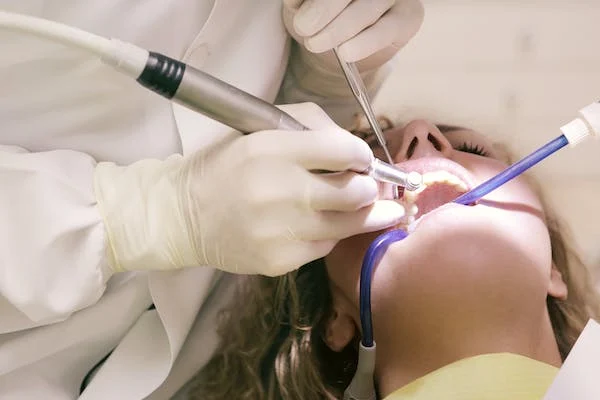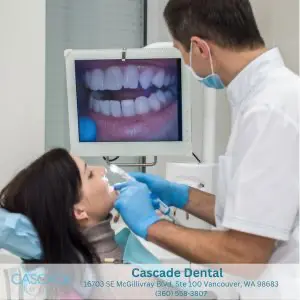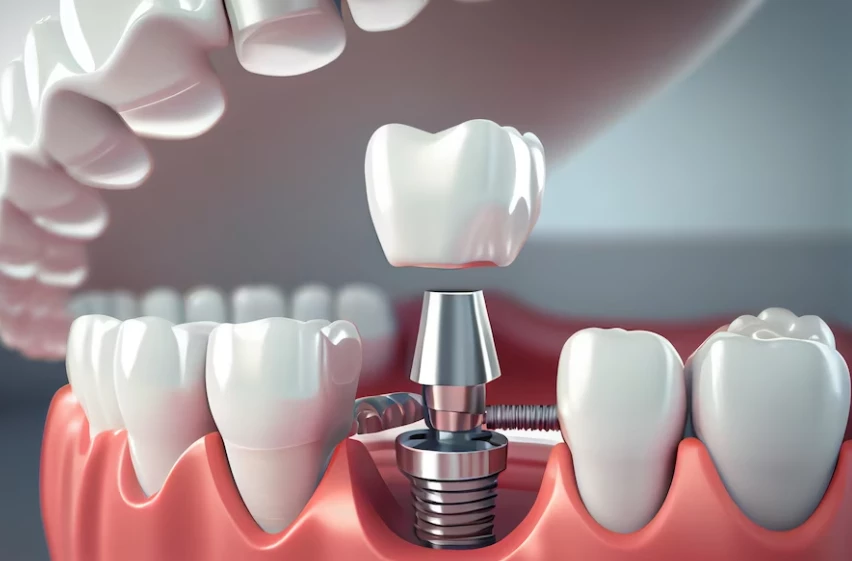Tooth extraction, once a dreaded procedure, has become less intimidating thanks to the advancements in modern dental technologies and techniques. It’s no longer the “one-size-fits-all” solution for dental problems, and for good reason.
Thanks to innovations in dental care, tooth extraction is now just one of many options to consider, and in some cases, it may not even be necessary at all. So, if you’ve been told that you need a tooth extraction, you might be wondering, “Is that really the only choice?”
Let’s take a closer look at tooth extractions in today’s dental landscape and explore the factors, technologies, alternatives, and risks associated with this procedure.
What Factors Determine If a Tooth Extraction is Necessary in Modern Dentistry?
In the past, tooth extractions were often seen as a routine way to solve a variety of dental issues. However, with the incredible advancements in dental technology, the decision to extract a tooth is now a much more nuanced one. Dentists today consider a range of factors before recommending an extraction, and each patient’s unique situation is carefully evaluated.
Here are some key factors that determine whether a tooth extraction is necessary in modern dentistry:
- Severity of the Damage: One of the main reasons a tooth might need to be extracted is if it’s severely damaged or decayed beyond the point of restoration. However, thanks to modern materials like dental crowns and root canals, many teeth that would have once been extracted can now be saved.
- Risk of Infection: If a tooth is severely infected and antibiotics are not enough to control it, extraction may be necessary to prevent the infection from spreading. In such cases, a dentist may recommend a root canal or extraction, depending on the tooth’s condition.
- Crowding or Alignment Issues: Some people have crowded teeth or jaws that can interfere with the proper alignment of the teeth. In orthodontics, tooth extraction is sometimes recommended as part of a treatment plan to make room for better alignment. However, with modern braces, aligners, and other orthodontic innovations, extractions are becoming less common.
- Impacted Wisdom Teeth: Wisdom teeth often cause problems because they don’t have enough space to emerge properly. While some wisdom teeth can be kept, many are extracted to prevent complications like infections, cysts, or damage to neighboring teeth.
- Gum Disease: Advanced gum disease can cause teeth to loosen or shift. If the damage is extensive and non-reversible, extraction may be the best option to prevent further complications or discomfort.
Modern dentistry also places a heavy emphasis on preserving as much natural tooth structure as possible. So, while tooth extraction may still be necessary in some cases, it’s far from a foregone conclusion. Dentists today prioritize preserving your natural teeth whenever they can.
How Do Advanced Dental Technologies Make Tooth Extractions Easier?
If you’ve ever had a tooth extraction in the past, you might remember it as a time-consuming, uncomfortable, or even painful experience. However, in today’s world of advanced dentistry, tooth extractions are much more efficient, faster, and less invasive.
Here’s a look at some of the dental technologies that have made tooth extractions easier and less traumatic:
- Laser Dentistry: One of the most revolutionary innovations in dental care, laser technology allows dentists to perform extractions with extreme precision. The laser targets the affected tissue with minimal damage to surrounding areas, reducing the need for stitches and significantly speeding up the healing process. Plus, the laser often minimizes bleeding and reduces discomfort during and after the procedure.
- Digital X-Rays: Traditional X-rays required the use of harsh chemicals and could take longer to process, making it difficult to get an accurate diagnosis in real-time. Today, digital X-rays provide instant, high-resolution images, allowing dentists to more easily identify the problem and plan the best course of action for tooth extraction. These X-rays also expose you to less radiation compared to traditional ones, making them a safer option.
- 3D Imaging & Cone Beam CT Scans: Advanced imaging technologies like 3D imaging and cone beam CT scans give your dentist a more detailed view of your teeth, bone structure, and surrounding tissue. This allows for highly accurate planning of the extraction, ensuring minimal trauma to your mouth and faster recovery.
- Sedation Options: Today, sedation dentistry offers patients a range of options to help them relax during the procedure. Whether it’s nitrous oxide (laughing gas), oral sedatives, or intravenous sedation, these techniques make the extraction process much more comfortable for patients who may have dental anxiety or fear.
- Minimally Invasive Surgical Techniques: Thanks to modern surgical tools and techniques, many extractions that once required larger incisions can now be done with smaller, more precise cuts. This results in less pain, faster healing, and fewer complications post-procedure.
These advancements not only make the extraction process more comfortable but also help to ensure that the procedure is completed with the least amount of disruption to surrounding tissues. The focus is always on promoting healing and minimizing discomfort for the patient.
Are There Alternatives to Tooth Extraction in Advanced Dentistry?
The truth is, tooth extraction is no longer the default solution for many dental issues. Thanks to advancements in materials, techniques, and technologies, many procedures can help save and restore teeth that once would have been extracted without a second thought.
Here are some popular alternatives to tooth extraction in advanced dentistry:
- Root Canal Therapy: If your tooth is infected or has severe decay, a root canal might be the best option. During this procedure, the infected or damaged pulp of the tooth is removed, and the space is cleaned, sealed, and restored. With modern tools and techniques, root canals are more comfortable and effective than ever before.
- Dental Crowns and Fillings: If a tooth is cracked, fractured, or decayed but not beyond repair, a dental crown or filling may be all that’s needed. Crowns are custom-made to fit over the existing tooth and restore its shape and function. In some cases, fillings can be used to repair cavities, preventing the need for extraction.
- Dental Implants: If a tooth has been lost or extracted, a dental implant can serve as a permanent solution. Implants are titanium posts that are surgically inserted into the jawbone, providing a stable foundation for a crown, bridge, or denture. Modern implants are highly durable and look and function just like natural teeth.
- Orthodontics: In cases of overcrowding or alignment issues, orthodontic treatments like braces or clear aligners can often help avoid the need for tooth extraction. These treatments move teeth into their proper positions, improving bite, aesthetics, and oral health.
- Periodontal Treatments: For patients with gum disease, advanced treatments like scaling and root planing or laser gum therapy can help treat the underlying infection and preserve teeth. This can often eliminate the need for extraction, especially in the early stages of gum disease.
While extraction may be necessary in some cases, advancements in dentistry have significantly expanded the array of treatment options available to patients. In many cases, saving a tooth is not only possible, but it can be the best choice for long-term oral health.
What Are The Risks Of Tooth Extraction In The Age Of Advanced Dental Care?
Despite the many advancements in dental care, tooth extraction is still a surgical procedure, and like all surgeries, it carries certain risks. It’s important to consider these risks before moving forward with the extraction of a tooth.
- Infection: Any surgical procedure carries a risk of infection. After a tooth extraction, it’s essential to follow all post-care instructions to prevent infection from setting in. With modern sterile techniques, however, the risk is minimal.
- Dry Socket: This occurs when the blood clot in the socket of the extracted tooth dislodges or dissolves too soon, exposing the bone and nerves. This can be extremely painful and delays healing. Fortunately, the risk of dry socket can be minimized with proper aftercare.
- Damage to Surrounding Teeth: Although rare, there is a slight risk that adjacent teeth can be damaged during the extraction. With advanced imaging and precise surgical techniques, this risk is significantly reduced.
- Nerve Injury: In cases where a tooth is close to sensitive nerves, there is a small risk of nerve damage, which could result in numbness or tingling in the lip, chin, or tongue. Your dentist will take steps to minimize this risk and determine the best course of action if the tooth is near a nerve.
- Long Recovery Time: While modern extraction techniques reduce recovery time, there is still a period of healing needed. Some people may experience discomfort, swelling, or bruising post-procedure.
While tooth extraction is safe when performed by an experienced dentist, it’s important to weigh the risks and benefits. If you’re concerned about the procedure, be sure to discuss your options with your dentist and explore alternatives before making a decision.
Tooth extraction in modern dentistry is no longer the one-size-fits-all approach it used to be. Thanks to groundbreaking advancements in dental technology, materials, and procedures, tooth extractions are now easier, faster, and less invasive than ever before. However, extractions are no longer the first and only solution to dental problems. Thanks to alternatives like root canals, implants, and orthodontics, saving your natural teeth is often possible and can lead to better long-term oral health.
So, if you’ve been told you need a tooth extraction, take a moment to consider all your options. With modern dentistry, there may be a way to avoid the extraction altogether and preserve your natural smile for years to come. Don’t hesitate to speak with your dentist about the best treatment plan for your unique needs—you might be surprised at the solutions available to you!
Ready to Explore Your Options? Let Cascade Dental Guide You to the Best Solution!
At Cascade Dental, we believe that every patient deserves personalized, compassionate care tailored to their unique needs. If you’re facing the possibility of a tooth extraction, don’t rush into a decision. Our team of skilled professionals will take the time to discuss all the alternatives and help you choose the treatment that’s right for you.
Whether it’s preserving your natural tooth with a root canal, exploring orthodontic options, or considering implants, we’ll ensure that your oral health is in the best possible hands. Reach out to us today to schedule a consultation and take the first step toward a healthier, more confident smile!
Call Cascade Dental now and discover the modern solutions that are transforming dental care. Your perfect smile is just a visit away!



